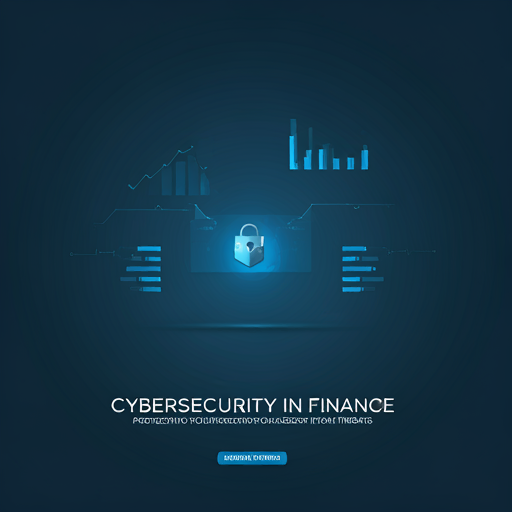Introduction to Cybersecurity in Finance
The Importance of Cybersecurity
In today’s digital landscape, cybersecurity is crucial for finance. He must recognize the potential threats. Cyber attacks can lead to significant financial losses. This is a serious concern for everyone.
Key components of cybersecurity include:
He should prioritize these areas. Awareness is key in preventing breaches. “An ounce of prevention is worth a pound of cure.” Regular training can make a difference.
Overview of Financial Threats
Here are 10 trending article titles for a financial website based on the latest news and analysis of financial trends: No input data
Common Cyber Threats in the Financial Sector
Phishing Attacks
Phishing attacks represent a significant threat in finance. He must be vigilant against deceptive emails. These attacks often impersonate legitimate institutions. Trust is easily exploited in these scenarios.
Victims may unknowingly provide sensitive information. This can lead to identity theft and financial loss. “Knowledge is power,” especially in cybersecurity. Awareness is essential for prevention. Regular training can mitigate risks effectively.
Ransomware and Malware
Ransomware and malware pose serious risks in finance. He must understand their potential impact. These malicious programs can encrypt critical data. Recovery can be costly and time-consuming.
Organizations often face significant operational disruptions. Prevention is more effective than recovery.” Regular backups can safeguard against losses. Awareness is crucial for effective defense.
Impact of Cyber Attacks on Financial Assets
Financial Losses and Reputational Damage
Cyber attacks can lead to substantial financial losses. He must consider both direct and indirect costs. Direct costs include theft of funds and recovery expenses. Indirect costs often involve lost business opportunities and legal fees.
Additionally, reputational damage can erode client trust. This may result in reduced market share. “Tfust is the foundation of financial relationships.” Long-term impacts can be difficult to quantify. Proactive measures are essential for safeguarding assets.
Regulatory Consequences
Cyber attacks can trigger significant regulatory consequences. He must navigate complex compliance frameworks. Regulatory bodies may impose fines for data breaches. These penalties can severely impact financial stability.
Furthermore, non-compliance can lead to increased scrutiny. This often results in more rigorous audits. “Regulations are designed to protect stakeholders.” Organizations may face reputational harm as well. Adhering to regulations is essential for long-term viability.
Best Practices for Cybersecurity in Finance
Implementing Strong Password Policies
Implementing strong password policies is essential for cybersecurity. He must ensure that passwords are complex and unique. Weak passwords can easily be compromised by attackers. This increases the risk of unauthorized access.
Regularly updating passwords further enhances security. Multi-factor authentication adds an additional layer of protection. “Security is a process, not a product.” Employees should be trained on best practices. Awareness can significantly reduce vulnerabilities in the system.
Regular Software Updates and Patching
Regular software updates and patching are critical for security. He must address vulnerabilities promptly. Unpatched software can be an easy target for cybercriminals. This can lead to significant financial losses.
Automated updates can streamline this process. “Prevention is better than cure.” Consistent patch management reduces exposure to threats. He should prioritize this in his cybersecurity strategy.
Role of Technology in Enhancing Cybersecurity
Blockchain Technology and Security
Blockchain technology enhances cybersecurity through decentralization. He must understand its potential benefits. By distributing data across multiple nodes, it reduces single points of failure. This makes unauthorized access significantly more difficult.
Immutable records ensure data integrity and transparency. “Trust is built on transparency.” Smart contracts automate and secure transactions. He should consider blockchain as a vital security measure.
Artificial Intelligence in Threat Detection
Artificial intelligence significantly enhances threat detection capabilities. He must leverage machine learning algorithms for analysis. These systems can identify patterns indicative of cyber threats. This proactive approach minimizes potential damage.
Moreover, AI can analyze vast amounts of data quickly. “Speed is crucial in cybersecurity.” Automated responses can neutralize threats in real-time. He should integrate AI into his security framework. Continuous learning improves the system’s effectiveness over time.
Building a Cybersecurity Culture in Financial Institutions
Employee Training and Awareness Programs
Employee training and awareness programs are essential for cybersecurity. He must ensure that all staff understand potential threats. Regular training sessions can cover topics such as phishing, password management, and data protection. This knowledge empowers employees to act responsibly.
Additionally, simulations can reinforce learning effectively. “Practice makes perfect,” especially in cybersecurity. Creating a culture of vigilance enhances boilersuit security posture. He should encourage open communication about security concerns. Continuous education is vital for adapting to evolving threats.
Establishing Incident Response Protocols
Establishing incident response protocols is crucial for security. He must define clear roles and responsibilities. A well-structured plan enables quick action during a breach. This minimizes potential damage and recovery time.
Regular drills can test the effectiveness of these protocols. “Preparation is key to success.” He should document all incidents for future analysis. Continuous improvement is essential for adapting to new threats.
Future Trends in Cybersecurity for Finance
Emerging Threats and Challenges
Emerging threats and challenges are reshaping cybersecurity. He must stay informed about evolving tactics. Advanced persistent threats (APTs) pose significant risks to financial institutions. These attacks are often sophisticated and targeted.
Additionally, the rise of quantum computing presents new vulnerabilities. “Change is the only constant.” Organizations must adapt their strategies accordingly. Investing in innovative security solutions is essential. Proactive measures can mitigate future risks effectively.
Innovative Solutions and Strategies
Innovative solutions and strategies are essential for cybersecurity. He must explore advanced technologies like artificial intelligence. These tools can enhance threat detection and response. Automation streamlines processes and reduces human error.
Furthermore, adopting a zero-trust architecture strengthens security measures. “Trust no one, verify everything.” Regular assessments of security protocols ade vital. He should prioritize continuous improvement in his strategies. Staying ahead of threats requires proactive planning.

Leave a Reply